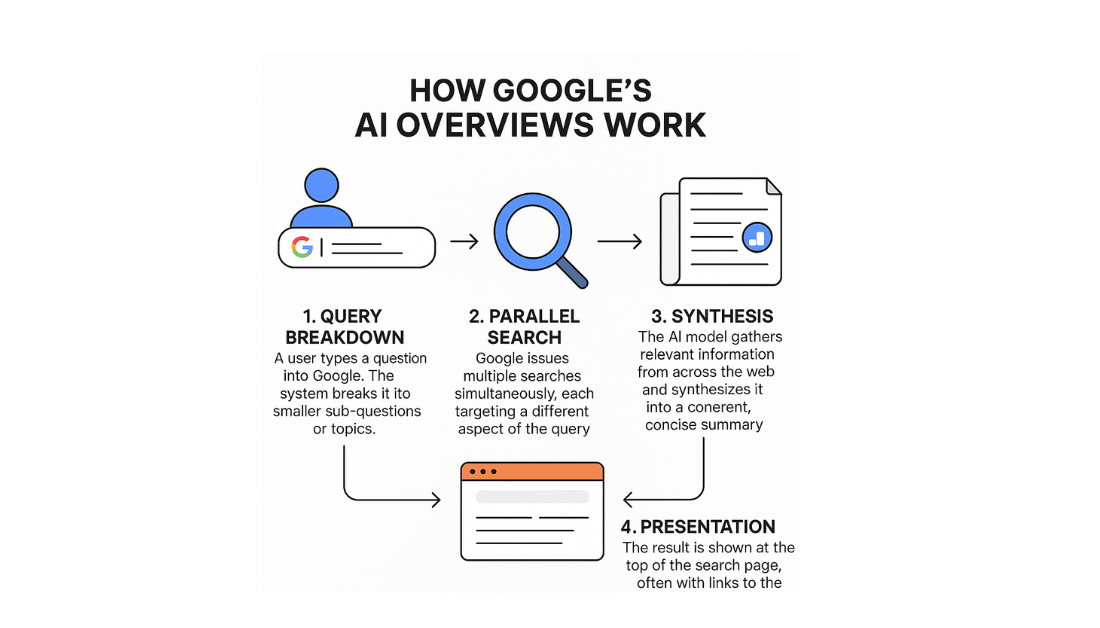
Google’s AI Overviews have become a defining feature of its search experience, I mean how many of us often just reading them without scrolling through the results...I know I have!
These AI-generated summaries aim to answer your questions directly at the top of the search page, often without requiring a click. But how exactly do they work? And why are they now the subject of an antitrust complaint in the EU?
Let’s break it down.
Let’s Start With How AI Overviews Work!
AI Overviews are automated summaries generated by Google’s large language models (LLMs), designed to give users quick, helpful answers to their queries. Instead of just showing a list of links, Google now often displays a paragraph or two that synthesises information from across the web.
These summaries are powered by Gemini 2.5, Google’s most advanced AI model to date, which can understand complex questions, reasoning across multiple sources, and generating natural-sounding responses
Under the hood, AI Overviews rely on a process called query fan-out. Here’s how it works:
Google uses this approach to dive deeper into the web than traditional search, aiming to provide more nuanced and context-rich answers.
From a user perspective, AI Overviews are fast, helpful, and increasingly accurate. But for publishers and content creators, the story is different...
The Antitrust Complaint
This Month, you've probably seen the news that the Independent Publishers Alliance filed a formal complaint with the European Commission, accusing Google of:
- Using publisher content without permission to train and generate AI Overviews.
- Diverting traffic away from original sources by answering questions directly.
- Offering no opt-out mechanism short of disappearing from Google Search entirely.
The complaint argues that Google’s dominant position in search gives it an unfair advantage, allowing it to prioritise its own AI-generated content over links to external websites, and it’s certainly got people talking.
Google has defended AI Overviews as a tool for discovery, claiming that they still drive billions of clicks to websites and that traffic patterns are influenced by many factors. However, the company has not yet introduced a way for publishers to opt out of AI Overviews without being de-indexed. Which does feel slightly “It’s our way or nothing’, but as regulators investigate, the outcome could shape the future of AI in search and shift the balance of power between tech giants and content creators.
Read more on the Antitrust complaint here via Extreme Tech
How Performance Marketers Are Adapting
At Forward Role, we’re seeing the SEO and paid search industries evolving rapidly to help content creators maintain visibility and value. Marketers are now optimising content not just for traditional rankings, but for inclusion in AI-generated summaries. They’re adjusting strategies to complement AI Overviews, ensuring that sponsored content remains discoverable even as organic click-through rates decline. This shift could result in reduced organic traffic for websites, especially those that rely on providing simple answers to more informational queries. The clickthrough rate for such queries will thus likely decrease by over 50% (finch.com).
Google’s AI Overviews represent a major leap in how we interact with information online. But as with any powerful technology, they raise important questions about fair use, transparency, and control.
If you need support growing your performance marketing team, to boost your online visibility - get in touch with our expert team!








